Marsh Harrier Circus aeruginosus
Fairly common passage migrant and summer visitor, increasing in winter.
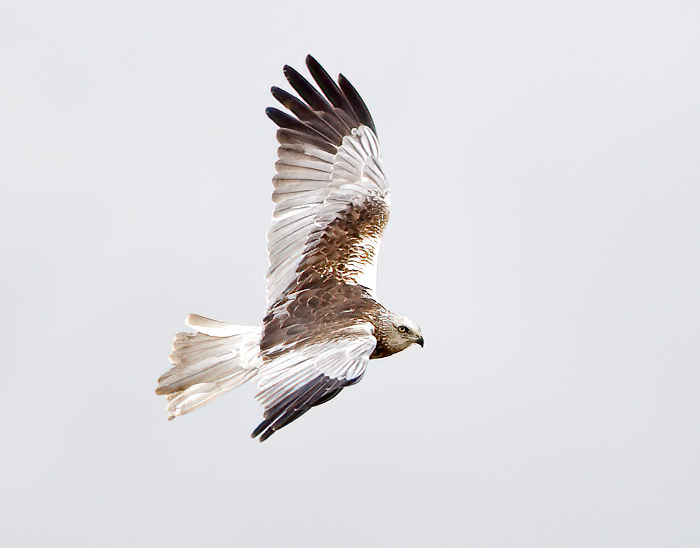
Adult male Marsh Harrier in north Lincolnshire in May 2009. Thought to be at least 6 years old in this photograph,
he returned in 2010 and 2011, when he was at least 8 years old; photograph courtesy of Graham Catley.
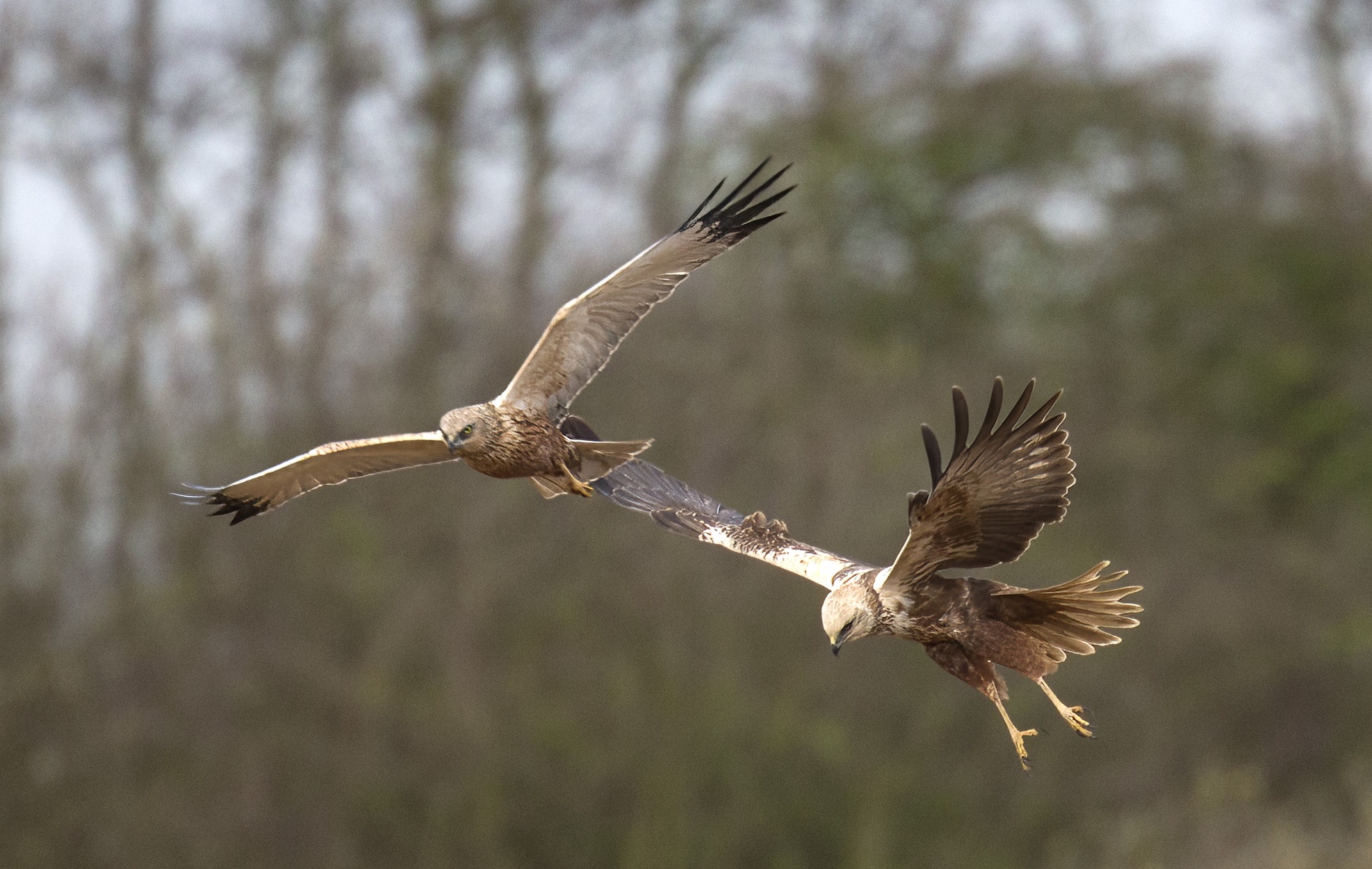
Male (left) and female (right) Marsh Harriers at Far Ings, March 30th 2017; photograph courtesy of Graham Catley.
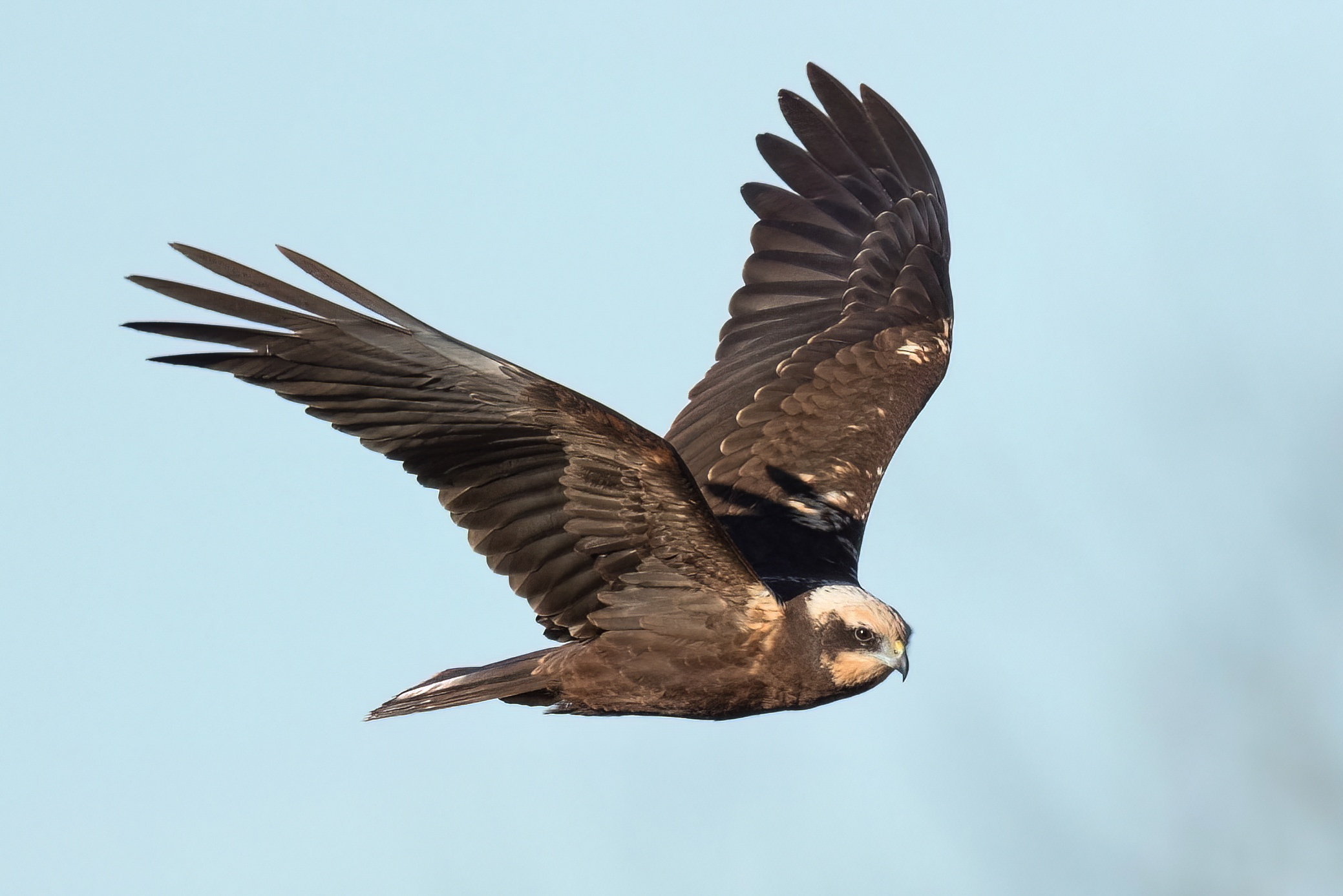
Juvenile Marsh Harrier at Far Ings July 1st 2008; photograph courtesdy of Graham Catley.
Lorand and Atkin (1989) summarised the status of Marsh Harrier from historic times when they formerly bred in the Fens but succumbed quickly when vast tracts were drained, up to their re-appearance as a breeding species in 1962 and through the 1970s and 1980s:
"There appear to be no records of when it ceased to nest in the county, but it is unlikely to have been much beyond the middle of the nineteenth century. Some were regularly seen in the northwest of the county in the early 1800s and Stonehouse found a nest in the Isle of Axholme in 1836. One in the Grantham Museum was said to have been obtained in Ruskington Fen on 12th October 1829 and there are three specimens from the Scotton Common area obtained about 1850 in the Lincoln Museum. One occurred at Great Cotes 8th March 1875 and in 1880 one from Wyham, near Grainsby was received by a Louth taxidermist. There were no further records until 18th November 1935 when one was seen at North Cotes".
After 1945 one or two birds appeared in most years and they became regular from the 1950s. Recolonisation took place from 1983, when a pair nested near the Wash, with birds increasing in number and nesting spreading to the Humber in 1992 and the Witham Fens in 1994. Further expansion took birds down other river corridors and into other wetland sites with the national census in 2005 locating 91 nesting females that fledged 236 young in the county. Since then 108 pairs were recorded in 2009 but there appears to have been a decline in confirmed breeding numbers thereafter, but no full census has taken place. Regular monitoring in the north of the county shows a peak in numbers in 2012 with an ongoing decline since then. Wintering numbers have increased to peak at around 50 birds in the mid-2000s with the bulk on the Humber but birds are increasingly regular on the coast and inland. A former large roost at Nocton Fen appears to have been abandoned possibly due to changes in cropping regime. Spring and autumn passage still occur with wing-tagged birds reared in Kent, Suffolk and Norfolk occurring in the county. RBBP records show an average of 45 pairs per year bred during the period 2013-2017.
Since then, data have been regularly submitted to the British Rare Breeding Bird Panel (RBBP), including that for 2005 when a national survey of Marsh Harriers was conducted and 91 pairs reported in Lincolnshire, fledging a minimum of 236 young. The RBBP publishes regular reports in British Birds, and in 2015 included details on 90 rare species which bred or attempted to breed. Details of all breeding Marsh Harrier records received by RBBP and LBC from 2000 onwards are tabulated below. The picture is incomplete as coverage varies from year to year. There has been no full survey of the Wash and the southern end of the county since 2009. In that year 109 breeding pairs were discovered in Lincolnshire when Holling (2009) reported that in the UK as a whole there were 364-408 breeding females/pairs. At that time this represented between 26-29% of the UK breeding population using the available data (although of course the UK figure may have under-represented the total depending upon coverage elsewhere).
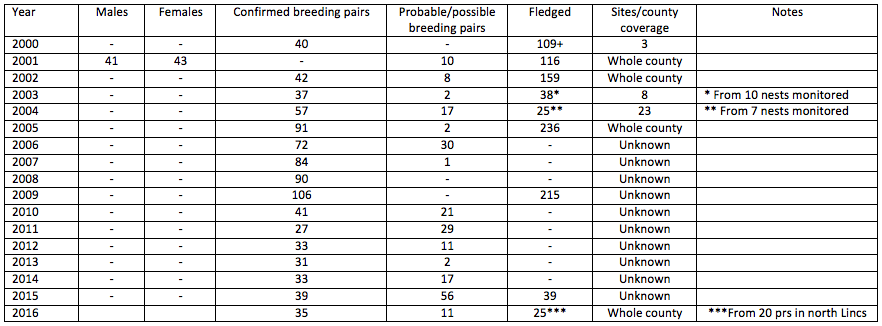
In addition to the countywide breeding bird data published by the RBBP, Graham Catley has been conducting a detailed study of the Marsh Harriers breeding in north Lincolnshire since 1992. This population has shown a sustained increase since then and the numbers of young fledged vary considerably according to weather, crop conditions and coverage:
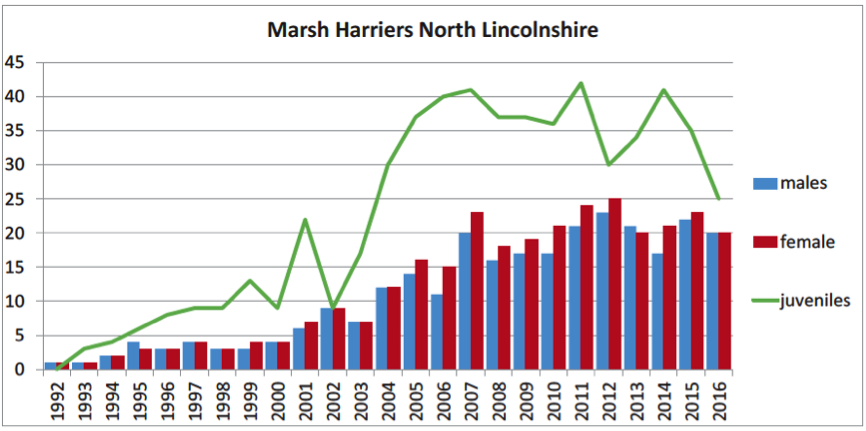
In parallel with the rise in numbers of breeding pairs, the numbers at autumn roosts and those over-wintering in the county have increased markedly in recent years. The table below is from the LBR 2016 and summarises counts at localities within four broad regions, though it is difficult to be sure which reports refer to the same birds within these.

There have been, and continue to be, many sightings of Marsh Harriers ringed and wing-tagged as nestlings. Below are three sightings made in Lincolnshire during 2015 and 2016 of first-winter birds from nests further south, in Norfolk, Suffolk and Cambridgeshire, behaviour that we now know to be typical.
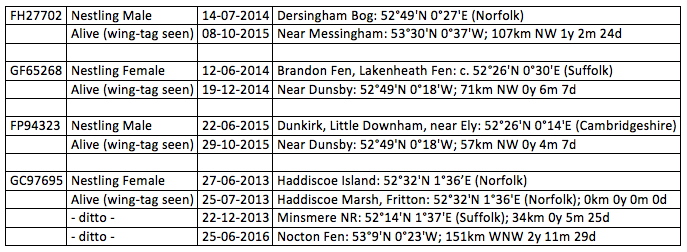
References
Holling, M. and the Rare Bird Breeding Panel (2009). Rare breeidng birds in the UK in 2009. British Birds 104: 476-537.
Holling, M. and the Rare Breeding Birds Panel (2015). Rare breeding birds in the UK in 2015. British Birds 110: 706-754.
(Original account prepared April 2018; updated with reference to the new Birds of Lincolnshire (2021), September 2022)
